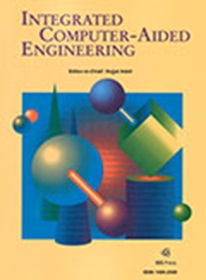A broadcast sub-GHz framework for unmanned aerial vehicles clock synchronization
IF 5.3
2区 计算机科学
Q1 COMPUTER SCIENCE, ARTIFICIAL INTELLIGENCE
引用次数: 0
Abstract
Nowadays, set of cooperative drones are commonly used as aerial sensors, in order to monitor areas and track objects of interest (think, e.g., of border and coastal security and surveillance, crime control, disaster management, emergency first responder, forest and wildlife, traffic monitoring). The drones generate a quite large and continuous in time multimodal (audio, video and telemetry) data stream towards a ground control station with enough computing power and resources to store and process it. Hence, due to the distributed nature of this setting, further complicated by the movement and varying distance among drones, and to possible interferences and obstacles compromising communications, a common clock between the nodes is of utmost importance to make feasible a correct reconstruction of the multimodal data stream from the single datagrams, which may be received out of order or with different delays. A framework architecture, using sub-GHz broadcasting communications, is proposed to ensure time synchronization for a set of drones, allowing one to recover even in difficult situations where the usual time sources, e.g. GPS, NTP etc., are not available for all the devices. Such architecture is then implemented and tested using LoRa radios and Raspberry Pi computers. However, other sub-GHz technologies can be used in the place of LoRa, and other kinds of single-board computers can substitute the Raspberry Pis, making the proposed solution easily customizable, according to specific needs. Moreover, the proposal is low cost, since it does not require expensive hardware like, e.g., onboard Rubidium based atomic clocks. Our experiments indicate a worst case skew of about 16 ms between drones clocks, using cheap components commonly available in the market. This is sufficient to deal with audio/video footage at 30 fps. Hence, it can be viewed as a useful and easy to implement architecture helping to maintain a decent synchronization even when traditional solutions are not available.一种用于无人机时钟同步的广播sub-GHz框架
如今,一套合作无人机通常用作空中传感器,以监测区域和跟踪感兴趣的对象(例如,边境和沿海安全和监视,犯罪控制,灾害管理,紧急第一反应,森林和野生动物,交通监测)。无人机产生相当大的、连续的多模态(音频、视频和遥测)数据流,流向具有足够计算能力和资源来存储和处理数据的地面控制站。因此,由于这种设置的分布式性质,无人机之间的移动和距离的变化进一步复杂化,以及可能的干扰和阻碍通信的障碍,节点之间的公共时钟对于从单个数据报中正确重建多模态数据流是至关重要的,这些数据报可能被无序接收或具有不同的延迟。提出了一种使用sub-GHz广播通信的框架架构,以确保一组无人机的时间同步,即使在常规时间源(例如GPS, NTP等)不可用于所有设备的困难情况下也可以恢复。然后使用LoRa无线电和树莓派计算机实现和测试这种体系结构。然而,其他sub-GHz技术可以代替LoRa,其他类型的单板计算机可以替代Raspberry Pis,使所提出的解决方案易于根据特定需求进行定制。此外,该提议的成本很低,因为它不需要昂贵的硬件,例如基于铷的机载原子钟。我们的实验表明,使用市场上常见的廉价组件,无人机时钟之间的最坏情况偏差约为16毫秒。这足以处理30 fps的音频/视频素材。因此,它可以被视为一种有用且易于实现的体系结构,即使在传统解决方案不可用时,它也可以帮助维护良好的同步。
本文章由计算机程序翻译,如有差异,请以英文原文为准。
求助全文
约1分钟内获得全文
求助全文
来源期刊

Integrated Computer-Aided Engineering
工程技术-工程:综合
CiteScore
9.90
自引率
21.50%
发文量
21
审稿时长
>12 weeks
期刊介绍:
Integrated Computer-Aided Engineering (ICAE) was founded in 1993. "Based on the premise that interdisciplinary thinking and synergistic collaboration of disciplines can solve complex problems, open new frontiers, and lead to true innovations and breakthroughs, the cornerstone of industrial competitiveness and advancement of the society" as noted in the inaugural issue of the journal.
The focus of ICAE is the integration of leading edge and emerging computer and information technologies for innovative solution of engineering problems. The journal fosters interdisciplinary research and presents a unique forum for innovative computer-aided engineering. It also publishes novel industrial applications of CAE, thus helping to bring new computational paradigms from research labs and classrooms to reality. Areas covered by the journal include (but are not limited to) artificial intelligence, advanced signal processing, biologically inspired computing, cognitive modeling, concurrent engineering, database management, distributed computing, evolutionary computing, fuzzy logic, genetic algorithms, geometric modeling, intelligent and adaptive systems, internet-based technologies, knowledge discovery and engineering, machine learning, mechatronics, mobile computing, multimedia technologies, networking, neural network computing, object-oriented systems, optimization and search, parallel processing, robotics virtual reality, and visualization techniques.
 求助内容:
求助内容: 应助结果提醒方式:
应助结果提醒方式:


